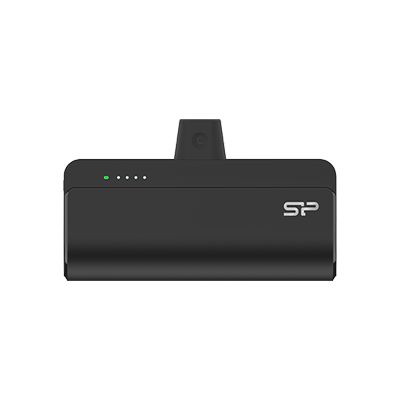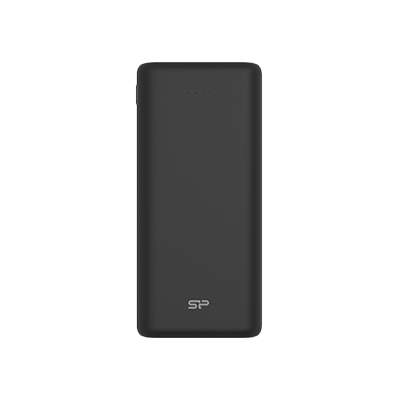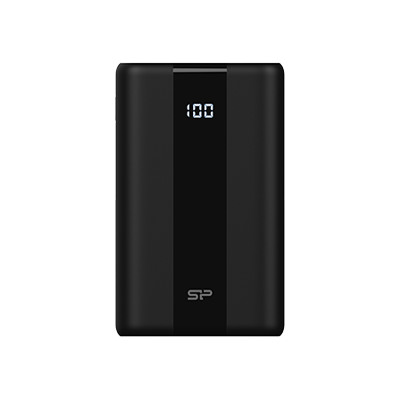![]()
行充成為現代人的必備品,應留意正確使用習慣,才能降低意外風險。
In recent years, incidents of power banks catching fire have increased, such as the case in January 2025, where a Busan Airlines flight experienced an in-flight fire due to a power bank. This event caused significant damage to half of the aircraft's body. As a result, safety concerns regarding power banks have become a major focus. In light of this, Busan Airlines recently announced a complete ban on using power banks on its flights to enhance overall flight safety.
As consumers, the most pressing concern is how to select a safe power bank to avoid potential dangers. This article provides you with comprehensive information about power bank safety, covering aspects from purchasing and usage to recycling. By applying this knowledge, you can select safer products for everyday use, travel, or international trips, ensuring a worry-free charging experience. If you want to learn more about power bank specifications, check out our related article on choosing the right power bank!
Menu
-How to Choose a Reliable Power Bank: Key Considerations
-4 Safety Tips for Using Power Banks
How to Choose a Reliable Power Bank: Key Considerations
Power banks have become essential for daily commutes and travel, offering a quick solution when your device runs out of battery. However, not all power banks are created equal, and some may even pose safety risks. Poorly labeled or low-quality models can make it difficult to verify voltage, current, or internal battery quality, increasing the risk of overheating or fire.
To choose a safe and reliable power bank, keep the following three factors in mind:
1. Check the Manufacturing Date and Product Labeling
When selecting a power bank, it is important to look beyond certification labels and pay attention to the manufacturing date printed on the product. Since lithium batteries degrade over time, a more recent manufacturing date generally indicates better power performance. Ensure that the product clearly states key information such as the manufacturing date, technical specifications, and the manufacturer's name and contact details. Additionally, verify that the packaging includes comprehensive usage instructions and safety warnings. Products with unclear origin or incomplete labeling should be avoided to minimize potential safety risks.
2. Verify Rated Capacity
Power banks often feature two capacity indicators:
- Battery Capacity: The total internal energy of the battery.
- Rated Capacity: the actual amount of power that can be delivered to a device, factoring in voltage conversion and energy loss during discharge.
Rated capacity is a more accurate indicator of real-world performance, with higher values reflecting more efficient and reliable charging.
Many consumers focus only on battery capacity and overlook rated capacity, which can be misleading. Some products may advertise high battery capacity but deliver much less usable power, resulting in faster power drain and fewer charging cycles than expected. Both Taiwan and Japan now require rated capacity to be clearly labeled, making it a more reliable metric to prioritize when choosing a power bank.
3. Be Cautious with Small-Sized, High-Capacity Devices
Compact power banks are favored for their portability, making them a convenient choice for many users. However, if a small-sized power bank claims an unusually high capacity, it’s important to approach with caution.
Always check whether the rated capacity is reasonable based on the product’s size, and compare specifications across different models. For instance, the QD50 by Silicon Power measures around 78.6 x 46.5 x 25.1 mm and offers a capacity of 5000mAh, which is appropriate for its form factor. Be cautious of similarly sized products that promote excessively high capacities at suspiciously low prices, as they may pose safety or quality concerns.
4 Safety Tips for Using Power Banks
Power banks have become an indispensable electronic accessory, but improper usage can pose significant safety risks. Most power bank fires occur during charging, often due to prolonged charging on beds or leaving them plugged into outlets unattended, which can lead to overheating or short circuits, causing spontaneous combustion or explosions. Therefore, adopting correct usage habits is crucial to minimize these risks.
Here are four essential tips regarding power bank usage and the surrounding environment:
1. Pay attention to the Charging Environment
When a power bank charges, its temperature rises, especially during fast charging, where current and voltage are higher. Thus, it's vital to check for flammable materials in the vicinity during charging. There have been instances of power banks catching fire when left on beds while charging phones due to excessive heat. For safety, also avoid placing power banks with sharp metal objects, as piercing could lead to fire.
Furthermore, keep power banks away from direct sunlight and high-temperature environments. Pay special attention to idle power banks at home, ensuring they aren't left near windows where they could be exposed to prolonged sunlight. It's recommended to store power banks in a dry, cool place to prevent battery degradation and reduce the risk of spontaneous combustion.
2. Avoid overcharging
Whether you're charging your phone with a power bank or charging the power bank itself, always pay attention to the charging duration. Avoid prolonged charging when unsupervised, such as when no one is home or while you're sleeping, by leaving the power bank continuously plugged into an outlet. If an anomaly occurs when no one is home during the day, it might not be addressed in time. Therefore, it's advisable to unplug the power bank as soon as it's fully charged.
Most power banks use lithium-ion or lithium-polymer battery cells, which do not have a memory effect. This means you don't need to charge them every time fully; you can charge them whenever convenient. Additionally, when using a power bank to charge your phone, try to avoid using your phone while it's charging, which helps maintain battery life and user safety.
3. Periodically Check the Power Bank's Condition
Over time, power banks can inevitably show signs of wear, such as cracks or damage to the casing from drops. If you notice any exterior damage, stop using the power bank immediately to ensure safety. Furthermore, if a power bank has been used for too long or is of poor quality, the battery might swell. If this occurs, dispose of it properly and immediately; do not continue using it. Many households have idle power banks that are forgotten in drawers. It's a good practice to regularly sort through and dispose of unused power banks to prevent dangers from swelling.
Also, pay attention to the condition of your charging cables. It's recommended to use original charging cables for optimal charging efficiency. If a charging cable shows signs of damage, exposed wires, or fraying, it should be replaced immediately.
4. Can Power Banks Be Taken on a Plane?
Generally, power banks can be taken on a plane, but airlines have specific regulations regarding their capacity. Due to recent in-flight spontaneous combustion incidents, new rules have been added for power bank usage on aircraft. If you're planning an international trip soon, here's a summary of the aviation regulations for power banks
.
First and foremost, remember that power banks must always be carried in your carry-on luggage; they are NOT allowed in checked baggage. Since aircraft cargo holds are not pressure-regulated, checking a power bank could cause it to swell or even catch fire due to pressure changes, with impacts and compression during handling further increasing the risk.
In general, power banks under 100Wh are permitted with quantity restrictions. Power banks between 100Wh and 160Wh require airline approval and also have quantity limits. Power banks over 160Wh are strictly prohibited from being carried on board. Therefore, before traveling abroad, remember to check your power bank's specifications.
Additionally, following a power bank fire incident in a Busan Air cabin in January 2025, the South Korean government promptly adjusted its flight safety regulations. In addition to the existing rule against checking power banks, it now explicitly prohibits the use of power banks during flights. It's always advisable to check the latest updates on your airline's official website before flying to ensure a safe journey
First and foremost, remember that power banks must be carried in your carry-on luggage and cannot be checked as luggage. This is because the aircraft cargo hold lacks pressure regulation, and checking a power bank could cause it to expand or even catch fire due to changes in air pressure. Additionally, the impact and compression during handling further increase the risk.
Generally, power banks with a capacity of 100Wh or less are permitted, but there are quantity restrictions; power banks with a capacity of 100Wh to 160Wh require airline approval and also have quantity restrictions; and power banks with a capacity of over 160Wh are completely prohibited. Therefore, when traveling abroad, be sure to confirm the specifications of your power bank beforehand to avoid any delays in your travel plans!
How many mAh is a 100Wh power bank?
Most airlines regulate power bank capacity using "Wh" (watt-hours), which differs from the commonly seen "mAh" (milliampere-hours) on the market.
To convert mAh to Wh, the formula is: (mAh ÷ 1000) × V (Voltage) = Wh. The voltage used in this calculation should be the power bank's "rated voltage."
For example, a power bank with a capacity of 20,000mAh and a rated voltage of 3.7V would have a watt-hour calculation of: 20,000mAh ÷ 1000 × 3.7V = 74Wh. Therefore, most power banks commonly used by the general public that are 20,000mAh or less and have a rated voltage of 3.7V can be brought on an airplane.
Here are some common power bank capacities and their corresponding watt-hour calculations, assuming a 3.7V rated voltage:
![]()
How to Dispose of a Power Bank?
If you've read this far and realize you have several old power banks at home that you're unsure how to dispose of, here's the correct way to recycle them!
The average lifespan of a power bank is about 2 to 4 years. If your power bank shows abnormalities or is too old, it's crucial to discard and recycle it properly. Power banks contain lithium-ion or lithium-polymer battery cells. If improperly disposed of, heavy metals and toxic substances from the battery can leach out, potentially causing environmental pollution to soil and water.
Furthermore, throwing them into a garbage truck could lead to explosions and fires due to compaction during operation. Therefore, discarded power banks should be separated from other recyclable items and handed over to recycling personnel for proper disposal. The same principle applies to other lithium batteries, which should also be recycled correctly.
Power Bank Recommendations
Now that you understand the critical importance of power bank safety, you'll undoubtedly be more discerning when making a purchase. However, the market is flooded with power bank models. Beyond checking for product certifications, manufacturing dates, and labels, what other protective technologies can ensure consumer safety?
According to the News, the heat generated by lithium batteries can primarily be attributed to three factors: overcharging, external short circuits, and internal short circuits. Therefore, the safety protection design of power banks is extremely important. It's recommended to choose brands that feature protection mechanisms against overcharging, short circuits, and over-discharging for enhanced safety.
Silicon Power (SP) has a dedicated engineering and design team for its entire range of power banks. Their products feature high-standard protective measures, including 12 comprehensive safety designs such as "Input High-Voltage Protection," "Input Current Protection," "Short-Circuit Protection," and "Device Overcharge Protection." These effectively prevent battery system anomalies and reduce the risk of hazards.
Furthermore, stable current output is key to enhancing power bank safety. Silicon Power adopts "smartFOCUS" advanced calibration technology, which maintains stable voltage and current during charging and reduces cable impedance. This prevents sudden fluctuations in current, protecting devices from damage.
![]()
In terms of temperature control, SP power banks' battery packs are equipped with protection mechanisms to prevent abnormal temperature increases, ensuring the system operates within limited temperature, voltage, and current ranges, thereby increasing stability. Additionally, a pressure relief mechanism is designed to release excessive internal pressure, preventing spontaneous combustion or explosions.
The internal circuit board is fitted with large-area thermal pads to enhance heat dissipation, and the outer casing features short-circuit prevention design, coupled with clear polarity markings and fool-proof design to prevent dangers from improper use. Products also utilize V-0 material and undergo multiple rigorous testing procedures, making them more durable and safer.
Silicon Power power bank products are certified with various international safety standards, including CE and FCC. If you're looking for a safe and practical power bank, here are three highly recommended products:
SP QD50
If you need a reliable everyday power bank, the SP QD50 is a great choice. Its lightweight design fits easily in your bag or pocket, making it perfect for daily use. With QC and PD fast charging, it can power your phone to 50% in just 30 minutes, thanks to its 5000mAh capacity, enough for a full top-up.
Equipped with a USB-C connector, it supports iPhone 15, iPad, and most Android devices. The plug-and-play convenience makes it ideal for students and office workers on the go, whether you're shopping, commuting, or grabbing a meal.
SP QS55
If fast charging is your priority, the SP QS55 is an excellent choice. It features triple-engine fast charging, PD 20W, QC3.0 18W, and Huawei SuperCharge 22.5W, covering a wide range of mobile devices. The built-in LED indicator shows power levels and also acts as a charging activation button for iPhones and iPads, offering both convenience and versatility.
Using new lightweight battery cells, the QS55 is much more compact than traditional high-capacity power banks, making it easy to carry. With multiple ports, it can charge up to four devices at once—perfect for travel or sharing with friends and family.
SP C20QC
If you need a high-capacity power bank, the SP C20QC is a solid choice. With 20,000mAh, it can charge a MacBook 1.5 times and a Switch 3.5 times, making it perfect for various devices. Its multi-port design supports charging several devices at once, saving time and keeping your gadgets powered throughout the day.Dual input ports offer flexible charging options, while the ergonomic, rounded design makes it easy to carry, ideal for both outdoor adventures and everyday use.
![]()
Silicon Power power banks feature advanced protection for safer charging.
Silicon Power also offers many more power banks supporting fast charging and diverse capacities. To learn more about products, check out Silicon Power official website.
• • •

__25G12DoaC4.jpg)
__25G12lSSvK.jpg)
__25G12g2Wcr.jpg)



